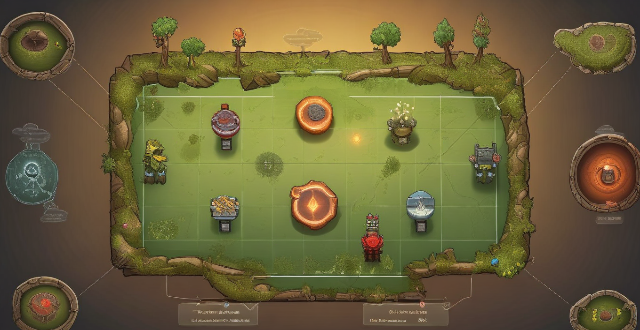Basketball strategies are crucial for team success, and a strategy board is an invaluable tool for coaches to illustrate plays and tactics. Some common strategies include Man-to-Man Defense, where each player guards a specific opponent; Zone Defense, covering specific areas of the court; Pick and Roll, using a screen to free up a player; and Fast Break, quickly transitioning from defense to offense after turnovers or missed shots. A strategy board helps players understand their roles and responsibilities within each strategy, enhancing communication and ensuring everyone is on the same page during gameplay.

Understanding Basketball Strategies with a Strategy Board
Basketball is a game of strategy, and understanding these strategies can give teams an edge in competition. A strategy board is a visual tool that coaches use to illustrate plays and tactics to players. Let's delve into some common basketball strategies using a strategy board:
Man-to-Man Defense
Objective: Guard your opponent player-to-player, limiting their scoring opportunities.
Key Points:
- Each player is responsible for guarding a specific opponent.
- Communication is key to prevent switches or screens from confusing the defense.
- Focus on positioning to deny passes and disrupt the offense flow.
Example Play:
X O
X O X
O X O
X O
Where "X" represents a defender and "O" represents an offensive player. In this setup, each defender sticks close to their respective offensive player, mirroring their movements.
Zone Defense
Objective: Cover a specific area of the court rather than a single player, making it harder for the offense to find open shots.
Key Points:
- Players are assigned to cover specific zones of the court.
- The goal is to force opponents into low-percentage shots.
- Flexibility is crucial as zones may need to adjust based on the offense's movement.
Example Play:
X O
X O X
X O X
O X O
In this zone setup, each defender covers a sector of the court, and they must communicate effectively to ensure no offensive player slips through unguarded areas.
Pick and Roll
Objective: Use a screen (pick) to free up a player for an open shot or drive to the basket.
Key Points:
- One player sets a pick while another dribbles toward them.
- The rolling player should look for a pass and a scoring opportunity after the pick.
- The dribbling player must be ready to shoot if the defense overcommits to stopping the roll.
Example Play:
O X
O X O X
O X O
X O
Here, "O" sets a pick for the dribbling "X," who then has the option to shoot, drive, or pass to the rolling "O." The other players are ready to space the floor or rebound.
Fast Break
Objective: Quickly transition from defense to offense after a turnover or missed shot to catch the opposing team off-guard.
Key Points:
- Sprint to advance the ball up the court.
- Look for numerical advantages, such as 3-on-2 or 2-on-1 situations.
- Fill the wings with supporting players to create scoring opportunities.
Example Play:
O
O X O
O O
X O
In this scenario, two offensive players ("X") quickly move up the court with a third player ("O") trailing slightly behind. They aim to create a fast break opportunity before the defense can fully set up.
By utilizing a strategy board, coaches can clearly illustrate these plays and more complex tactics to their teams, helping players understand their roles and responsibilities within each strategy. This visual aid enhances communication and ensures that everyone is on the same page during gameplay.